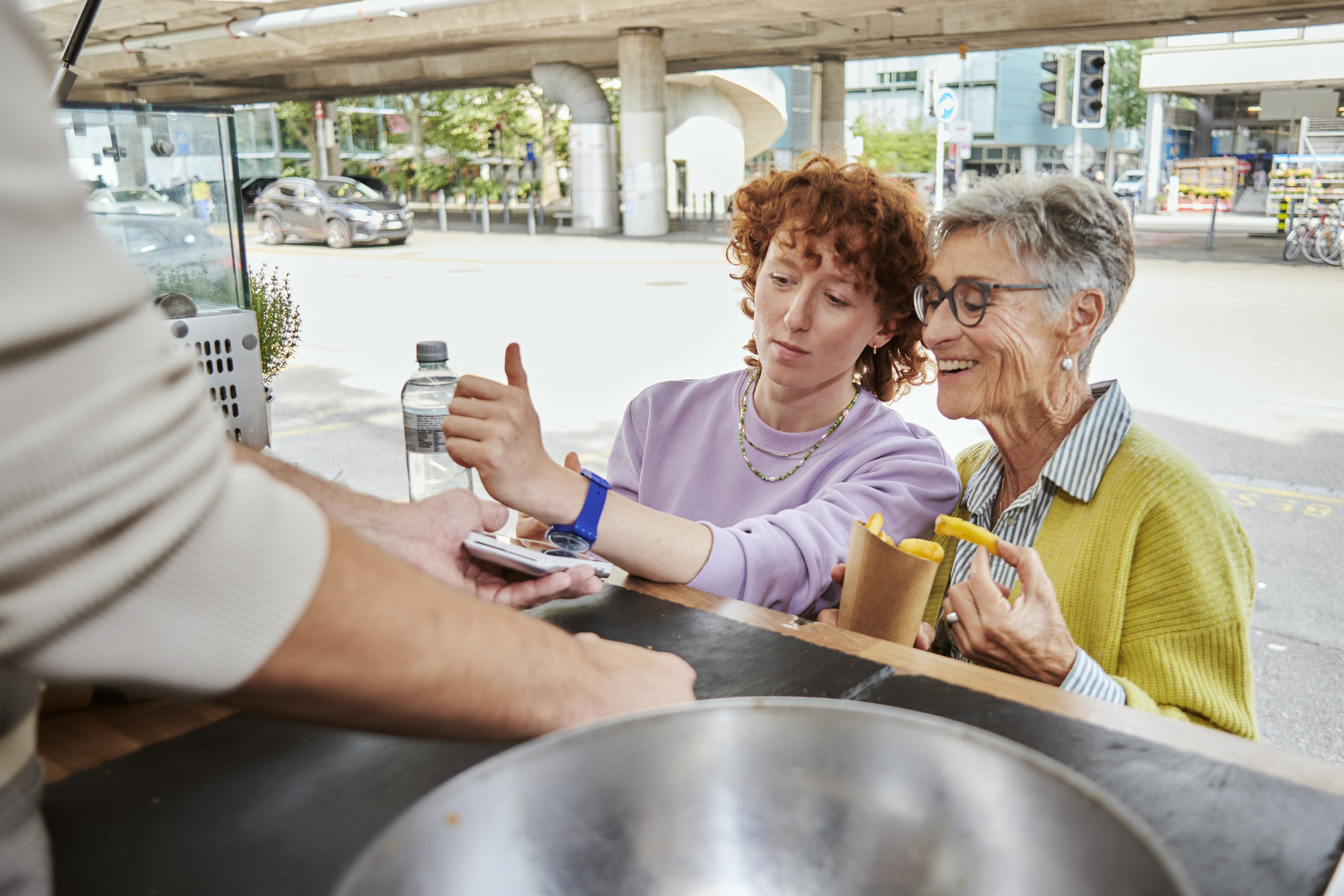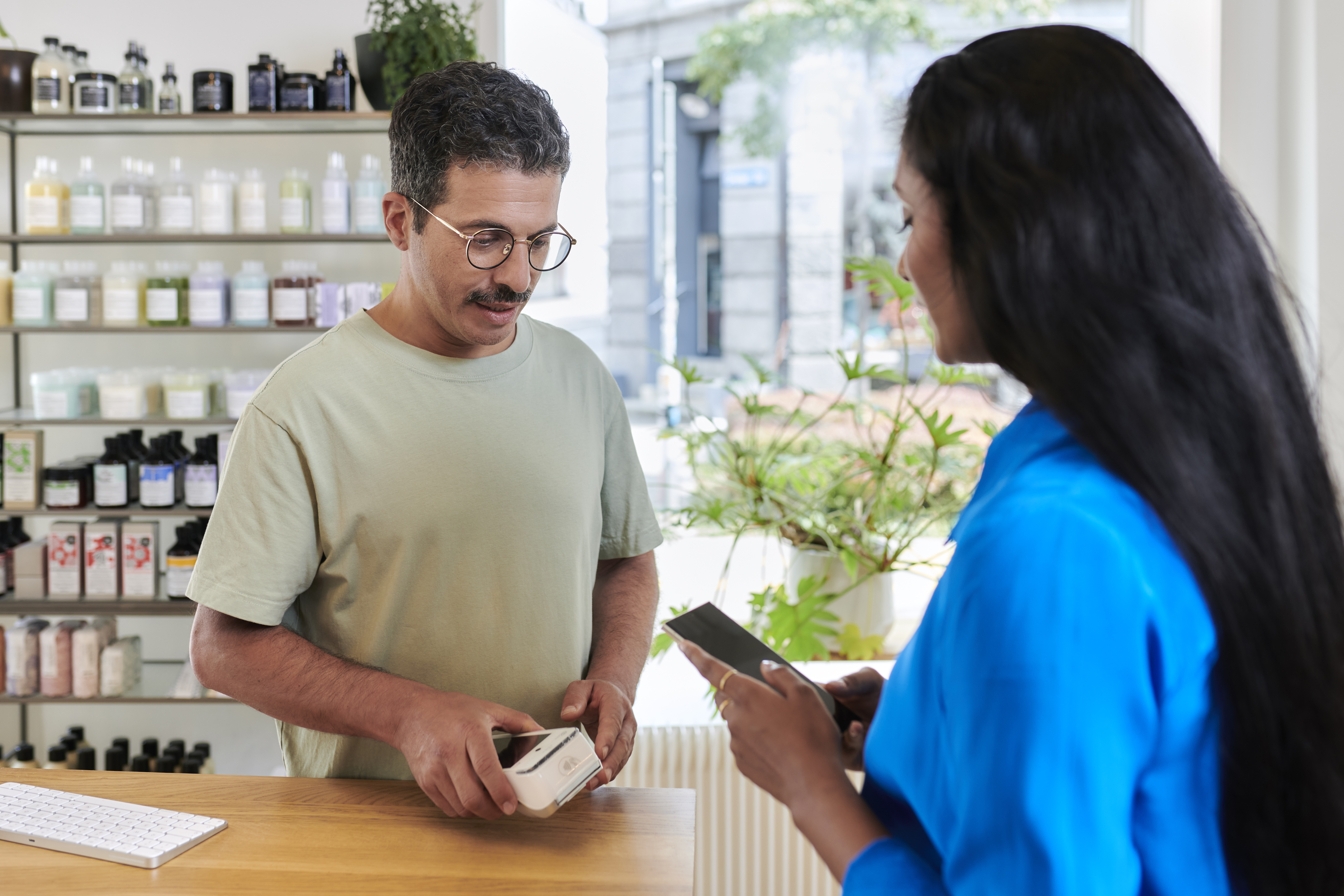Mobile wallets
Mobile wallets such as Apple Pay, Google Pay and Samsung Pay make payments easier than ever before. With just one click, you can make contactless payments securely worldwide.

Discover the range of mobile payment options: from TWINT and PostFinance Pay, to Apple Pay, Google Pay, Samsung Pay, SwatchPAY! and Garmin Pay. Use these secure and convenient payment options directly on your smartphone or wearable.

Mobile wallets such as Apple Pay, Google Pay and Samsung Pay make payments easier than ever before. With just one click, you can make contactless payments securely worldwide.

With wearables, you pay for your purchases directly via your smartwatch or other wearable devices. Enjoy convenience and reliability in one with SwatchPAY!, Garmin Pay and much more.
